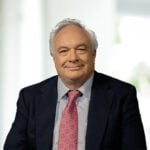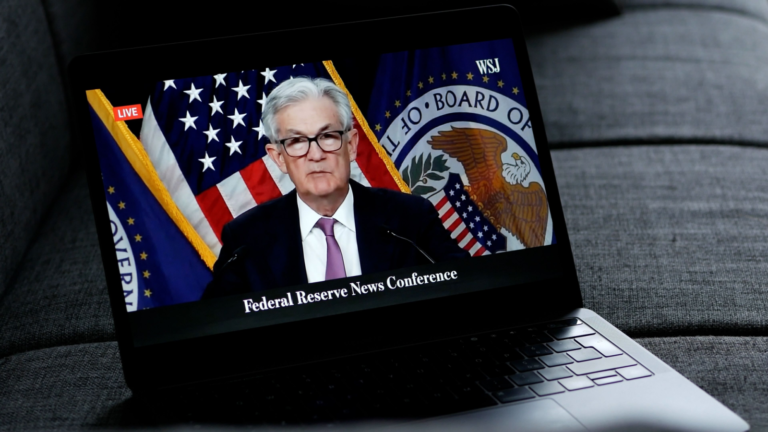Back in 1982, the Kansas City Federal Reserve was planning its annual get-together. Officials were hoping to expand the scope of their meeting and lure a “big name” to ensure more people would attend.
At the time, Paul Volcker was Chair of the Fed. He assumed office in 1979 and would later be credited for defeating the terrible inflation of the 1970s and early 80s by raising key interest rates to a peak of 20% during his tenure.
Although inflation would fall below 3% by 1983, history had not yet vindicated Volcker. But his attendance at the upcoming meeting was sure to draw interest. So, they came up with a plan. It was known that Volcker liked to fly fish, so they would hold the meeting at a beautiful location known for the sport.
It worked. Volcker attended that year, and the Jackson Hole meeting became known over the years as a place where central bankers, journalists and policy wonks from around the world would gather to discuss monetary policy.
I bring this up because the Fed’s Jackson Hole meeting just wrapped up this week. And Wall Street was waiting on pins and needles all week to hear Federal Reserve Chair Jerome Powell’s speech on Friday.
Investors were hoping it would offer important clues to the Fed’s plans for key interest rates. As I have been saying for some time now, the big question isn’t really about if the Fed will cut rates. Rather, it’s about how much the Fed will cut rates and when.
So, in today’s Market 360, we will review Powell’s speech and highlight the key points. We’ll also talk about the bigger picture around the speech – namely, how recent economic data is pointing to the need for cuts sooner rather than later. I’ll also share how to best position your portfolio from a market with falling rates and the bursting of the “cash bubble” that the Fed helped create.
“The Time Has Come”
Let’s not beat around the bush. The news from Jerome Powell’s speech yesterday was stunning and it couldn’t have been more direct.
In short, Powell said that “inflation has declined significantly” and that “the time has come” for the central bank to begin lowering key interest rates. Additionally, he said:
Our objective has been to restore price stability while maintaining a strong labor market, avoiding the sharp increases in unemployment that characterized earlier disinflationary episodes when inflation expectations were less well anchored. While the task is not complete, we have made a good deal of progress toward that outcome.
This comment is critical because inflation is not entirely within the Fed’s target rate (yet). Remember, the Fed’s favorite inflation indicator is the core Personal Consumption Expenditure (PCE) index, which rose 0% in May and 0.1% in June.
Now, the July PCE will be announced on August 30. Economist Ian Shepherdson estimates the PCE rose 0.13% in July, so core PCE is anticipated to be favorable and closer to the Fed’s 2% target. So, if the July PCE comes in at a 0.1% rise or less, it will be well within the Fed’s 2% inflation target and further set the Fed up for a key interest rate cut on September 18.
Now, I should also mention that Powell said he and his colleagues no longer “seek or welcome further cooling in labor market conditions.”
This is important because the labor market is showing increasing signs of stress.
On Wednesday, the Labor Department provided an early look at its revision to payroll job growth in the first quarter – and it was a big revision. The report showed that about 818,000 jobs disappeared in the first quarter, as payroll jobs needed to be revised to account for people working multiple jobs and/or not paying income taxes.
Goldman Sachs only expected a downward revision of 600,000 jobs, while JPMorgan anticipated a downward revision of 360,000 jobs. So, Wednesday’s revisions were a bit of a shock.
Essentially, in the past 12 months, only 2.1 million jobs were created, down from about 2.9 million jobs estimated prior to this week’s revision. Of course, the biggest repercussion of this revision is that the unemployment rate will rise.
You may recall that the unemployment rate currently stands at 4.3%. Back in April 2023, the unemployment rate was 3.4%. So, unemployment has risen steadily over the past 15 months – and I suspect it will continue to rise given the loss of 818,000 jobs in the first quarter.
Of course, high unemployment is not good for the economy. But it bodes well for future key interest rate cuts.
The Bottom Line
Going into Powell’s speech this week, there was a lot of hope and anticipation that the Fed will cut key interest rates at its upcoming September policy meeting. And now, it looks like that will indeed be the case.
The reality is that the Federal Reserve needs to stimulate job growth in order to continue to engineer a soft landing for the U.S. economy. The Atlanta Fed recently revised its third-quarter GDP estimates to 2%, down from previous estimates for a 2.4% annual pace. So, the Fed is now not only under pressure to cut key interest rates, but also to cut rates more than previously anticipated.
The bond market has already started to firm up in anticipation, with Treasury yields sliding lower this week. The 10-year Treasury yield dipped to about 3.8%. And the stock market should continue to rally as more folks anticipate a rate cut next month.
In the meantime, we remain in the dog days of summer, where trading volume is expected to remain weak, though the wild volatility we saw a couple of weeks ago has largely subsided. In fact, the Volatility Index (or VIX) has receded from a high of more than 38 to about 16 at the end of trading this week.
But as the Fed prepares to cut key interest rates, there is another threat on the horizon that you should know about…
An $8.8 trillion cash bubble is poised to burst any day now.
Millions of Americans will be left behind, while the few who prepare will have the opportunity to turn a few calculated moves into a wealthy retirement nest egg.
That’s why I sat down to tell investors everything they need to know about this monumental market event. Go here to check out my Emergency Cash Bubble Briefing now.
Sincerely,

Louis Navellier
Editor, Market 360

